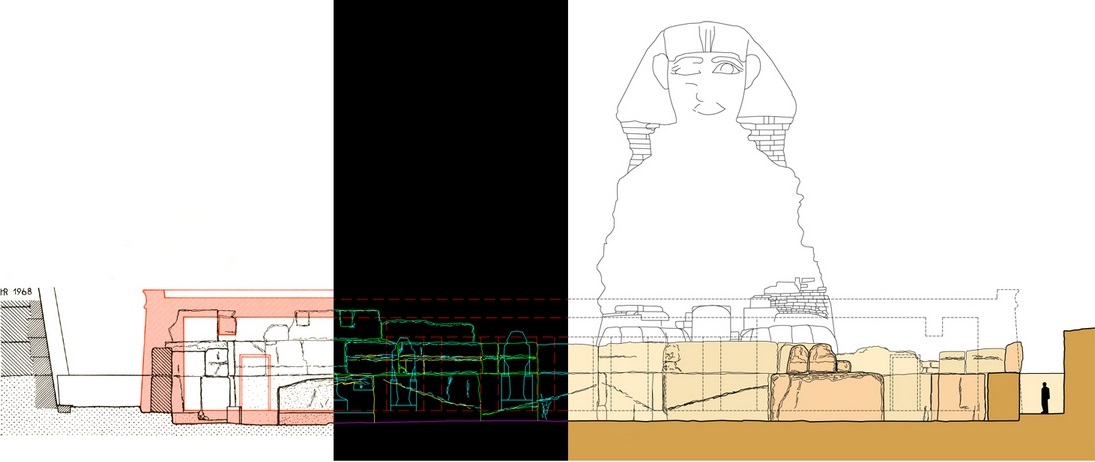Notice
Ancient Egyptian Architecture Online (AEGARON) is currently under development.
All of the resources remain available through the AEGARON data repository at https://dataverse.ucla.edu/dataverse/aegaron.
Sign up for the AEGARON mailing list here to be notified when the new version of the interactive site is launched.

About
Ancient Egyptian Architecture Online (AEGARON) provides vetted and standardized architectural drawings of a selection of ancient Egyptian buildings. These represent architecture from modest workmen's houses to temple complexes, dating from the Old Kingdom through Late Antiquity. The site also lists a vocabulary of Egyptian architectural terms in English, German and Arabic, illustrated with photographs and drawings mostly derived from the AEGARON building corpus. The terminology is divided in eight categories (from “Architectural Elements” to “Technical Terms”). Terms can belong to more than one category, and have synonyms, narrower and broader terms defined. Where possible, the AEGARON terms have been linked to the Getty Thesaurus of Art & Architecture.
AEGARON considers architectural drawings as historic sources: each plan is accompanied by a critical apparatus (drawing log), which contains background information. The plans can be downloaded freely for private and research purposes (terms of use). Please take a moment to learn about the various drawing types, views and scales as well as the different formats, that allow you to change them, e.g. by adding text or omitting selected details. We tell you how to best read the drawings, which standards we have developed for them and how you can extract measurements.
AEGARON is a cooperation between the German Archaeological Institute in Cairo (DAIK) and the University of California, Los Angeles (UCLA) and is made possible by a combined grant from the Deutsche Forschungsgemeinschaft (DFG) and the Endowment for the Humanities (NEH). The American-Egyptian-German AEGARON-Team consists of Architects, Archaeologists, Building Archaeologists, Designers, Programmers, Librarians & more.
